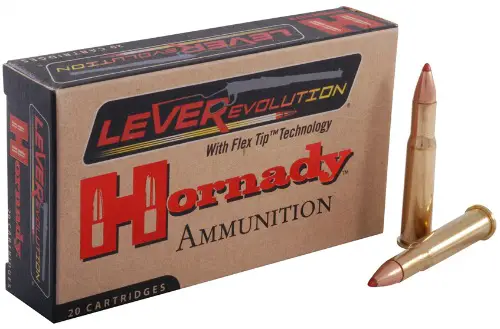|
The .25-35, Our First Modern Varmint, Small Predator and Deer Cartridge By Chuck Hawks  Let me begin this little dissertation by quoting the first couple of paragraphs from my Guns and Shooting Online Member Side article The .25-35 Winchester: "The .25-35 Winchester was introduced in 1895 for the Model 1894 Winchester rifle. It was one of the famous Winchester trio of high velocity, smokeless powder hunting cartridges. Along with the .30-30 Winchester and .32 Winchester Special, the .25-35 helped revolutionize North American hunting and usher in the modern era of high velocity, small bore rifle cartridges. Only a few years after the introduction of that trio, most of the big bore black powder cartridges that had decimated North American plains game were obsolete and on their way out. A new age had dawned, one that is still with us." "Modern shooters accustomed to the ultra-high velocities of the .257 Weatherby Magnum and .270 WSM have a hard time understanding that in its day the .25-35 was just as revolutionary, and probably more so. The jump from the 1300 fps muzzle velocity typical of small bore black powder cartridges to the 2300 fps of the .25-35 represented an enormous increase in killing power and significantly flattened trajectory, allowing hits to be made with greater certainty at much longer range. The later .250-3000 Savage, .257 Roberts, .25-06 Remington and .257 Weatherby Magnum are all simply steps further down the trail pioneered by the .25-35 Winchester." The .25-35 Winchester became sufficiently popular in Europe to be given a metric designation; over there it is called the 6.5x52R. Historically, when Marlin chambered the .25-35 in their rifles they called it the ".25-36 Marlin." Once very popular, the .25-35 eventually fell on hard times when its ballistics were surpassed by later "combination" cartridges, such as the .250-3000 Savage and .257 Roberts. When telescopic sights became popular, particularly for varmint and small predator shooting, Winchester's Model 94 rifle, originally designed for use only with iron sights, was at a disadvantage due to its top ejection. Winchester eventually dropped the .25-35 from the Model 94 line, focusing on the Model 94's reputation as a deer and black bear rifle in calibers .30-30 and .32 Special. However, Winchester continued to offer .25-35 factory loaded ammunition and still does. Winchester/USRAC solved the Model 94's scope mounting problem in 1982 with the introduction of the Angle Eject (AE) action, which allows easy, low, overbore riflescope mounting. It is no more difficult to mount a riflescope on an Angle Eject Model 94 than it is to mount a scope on a Marlin 336 lever action, or any modern bolt action rifle. Today, the most popular combination cartridge is the .243 Winchester. The .243 is also probably the most popular "starter" deer cartridge for young, female and recoil sensitive shooters of any age or sex. In terms of its killing power, the flat shooting .243 is a good 200 yard deer cartridge and (with appropriate loads) its flat trajectory makes it an excellent long range varmint/small predator cartridge at any range you can hit them. However, many hunters find its muzzle blast excessive. After all, the .243 is based on a necked-down .308 Winchester case and burns similar amounts of powder. This is where the .25-35 shines. Per the Hornady Handbook of Cartridge Reloading (10th edition), maximum loads for the .243 with 95-105 grain bullets burn around 43-47 grains of powder. The maximum loads for the .25-35 with the Hornady 110 grain FTX spitzer bullet require only 27.9-28.9 grains of powder. (Equivalent factory loads in either caliber are essentially maximum loads and will use similar amounts of powder.) No wonder the .25-35 has much less muzzle blast and recoil and is more fun to shoot! Of course, the .243 shoots significantly flatter than the .25-35, but the .25-35 shoots plenty flat enough for 200 yard shots at deer size animals. As deer and general Class 2 game cartridges, both the .25-35 and .243 Win. are limited by their killing power, rather than their trajectory. (For more on the killing power of the .243 as a deer cartridge, see The .243 Winchester: Its Capabilities as a Deer Cartridge.) Research has shown that most hunters should not shoot at deer beyond 160 yards, even from a blind and using a rest. Beyond this distance, the percentage of wounded animals skyrockets, regardless of the cartridge used. (See the South Carolina Department of Natural Resources Study Answers Questions about Deer, Ammo, Guns and Dogs.) The .25-35, especially with the excellent Hornady LEVERevolution factory load (or an equivalent reload), is a proven deer cartridge at this distance. The mild mannered .25-35 is making a comeback. It is again available in the re-introduced Winchester Model 94 line, probably the best and most accurate Model 94 AE's ever. In addition, Marlin and Henry have, or intend to (depending on which brand you prefer and when you are reading this), offered the .25-35 in their new rifles. For those who have not experienced the versatile, mild and effective .25-35 Winchester, now is a good time to discover this fine cartridge. |